Notes by the Editor
Scyld Berry
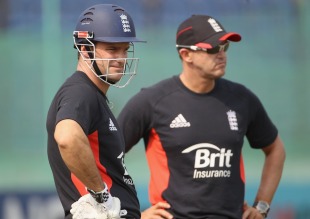
|
|||
|
Related Links
Yearly summary : 2011
Obituaries : Alec Bedser Cricketers of the year : Chris Read Cricketers of the year : Eoin Morgan Cricketers of the year : Jonathan Trott Cricketers of the year : Tamim Iqbal Essays : Vintage wizardry News : Evergreen Tendulkar feted by Wisden Other links:
Buy the 2011 Wisden Almanack
|
|||
It would be hard to think of a sizeable human organisation that has come closer to perfection for a couple of months than England's cricket team during the Ashes series in Australia. For those of us who have had to watch, for decades, the failure to translate the many resources of English cricket into achievement by the national side, England's performance over the last year - culminating in their retention of the Ashes - was especially satisfying.
A few England teams have triumphed in Australia by a greater numerical margin in distant days. But this side won as emphatically as any, for all three of their victories were achieved by an innings - and very likely they would have won the Brisbane Test if it had been played to a finish (as Tests in Australia used to be before the Second World War), after declaring their second innings with 1000 on the board. The success flowed from the thorough and considerate - not over-analytical and paralysing - planning of what I call the Andocracy, led by Andrew Strauss and Andy Flower. It would be wrong to say they conducted England's tour with military precision, because there was nothing regimented about it. The squad conveyed their enjoyment, whether doing their Sprinkler dance - a nice touch - or cavorting in Graeme Swann's video diaries or, most significantly, when playing.
A feature of the Andocracy - although Strauss began it before Flower became head coach - has been the attempt to win every tour game from the outset. This might seem an obvious objective, but treating warm-up games as little more than middle-practice was one of the manifestations of England's old failure to maximise resources. The impact of playing excellent cricket in the three first-class matches before the opening Test in Brisbane should never be underestimated. During this build-up a self-doubt emerged in Australia's cricket that I had not seen before on eight previous England tours there; and, by creating an aura of invincibility, the tourists increased it. The Australian public, even their media, seemed to some extent prepared for their team's failure.
The Andocracy not only chose the right personnel but brought them in, and sent them away, at the right time: the number of coaches and support staff was never so numerous as to overwhelm and diminish the players. Among them one should mention Richard Halsall, the fielding coach originally appointed - to Sussex then England - by Flower's predecessor Peter Moores. The first two hours of the second day at Sydney formed the finest exhibition of England fielding I have ever seen in some 400 Tests: they smothered the Australian batsmen just as Australia's fielders had suffocated England's four years before, not so much through natural athleticism as the maximisation of collective effort. England's co-ordination and unity in the field reflected the spirit of the whole touring party. It is worth noting that England took more catches (66) than they had taken wickets by all forms of dismissal in either of their two previous series in Australia; and a total of four run-outs to nil illustrated the difference in fielding and in teamwork.
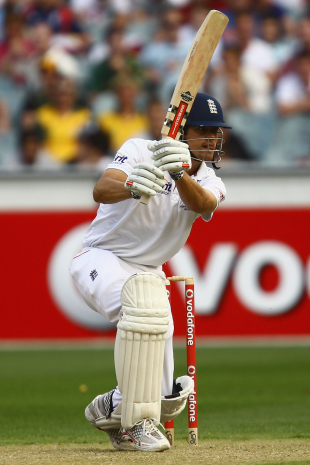
|
|||
It was a temptation to change the parameters for the Five Cricketers of the Year so Alastair Cook could be included on the strength of his batting in Australia - his aggregate of 766 runs was the second-highest for England in an Ashes series - and in Bangladesh, where he also captained promisingly. Yet Cook's achievement in Australia was all the more admirable for the very fact that he had been through a most difficult summer, when opening batsmen on both sides in the England-Pakistan series were troubled by the ball swinging under the cloud that prevailed. His mental strength in persevering until he had sorted out his footwork was astonishing - the opposite of Australia's self-doubt. The chief criterion for being selected as a Wisden Cricketer of the Year has to remain "influence on the English season". But Cook deserves to be enshrined on this year's cover, and continued good form - one hopes - will soon make him a Cricketer of the Year. With Jonathan Trott selected in this almanack, it is worth noting that nine of England's 13 players in the Ashes have won this accolade.
Of the man of the series award that Cook won in Australia, I am inclined to think James Anderson deserved a half-share. He took 24 wickets in the five Tests, which were all the more demanding for being crammed into seven weeks. A mark of England's organisation was that Anderson and Cook shared the responsibility for polishing the ball, whereas Australia had nobody in that specialist role; and even when a pitch was dead, England still found reverse swing. By the end of the series, such was the versatility of Anderson and his fellow pace bowlers that they were just as threatening with an old ball as a new one: and never, surely, has that been the case in the history of England's cricket.
Huge totals, including large individual centuries, and usually in the first innings; superlative fielding, so that England dropped only a couple of regulation chances; pace bowlers who could swing the ball both ways, whatever its age; and a spinner who could be relied on to threaten throughout and wrap up Australia's second innings provided the pace bowlers did not feast first. The joys for England's followers knew no bounds. Even the weather favoured the tourists, making conditions - pitches starting damp, cloud overhead - as near to English as traditional Australian: it was the wettest period ever recorded in some parts of eastern Australia, leading to horrifying floods. So nature made it easier for England to defy precedent and get away with four specialist bowlers and no all-rounder to speak of, and aided their seam-and-swing rather than the bang-it-in bowlers that Australia had; and it was luck they had earned.
Where we come from…
Another ingredient of England's success was their travelling supporters, who grew to number some 15,000 by the Melbourne and Sydney Tests. Not all of them belonged to the Barmy Army, but the majority did, and they contributed both to the atmosphere in the grounds and to England's morale: Paul Collingwood said England's slip fielders had goosepimples during the final rounds of singing in Sydney. My opinion of the Barmy Army was not favourable when it began, because the songs contained foul language which should not have been imposed on children watching. But last winter their songs were no worse than bawdy, ridiculed senior Australian players rather than the juniors, and were surprisingly tuneful; and their focus was on the cricket rather than themselves. Strauss was not entirely joking when he said the Barmy Army had prepared for the tour better than his players. I urge the ECB to help it parade at home matches - in designated areas - by enabling ticket-buyers to book more than a few seats in a row, as well as by lowering prices.
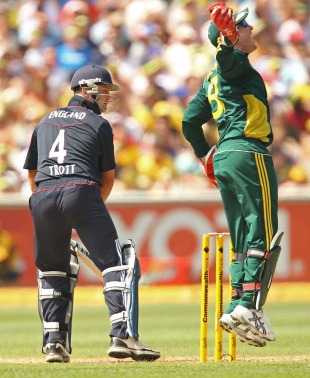
|
|||
Australian and English commentators alike, by the end of the series, observed that England had all the ingredients to become the leading cricket country. India's pace bowling was over-reliant on Zaheer Khan; South Africa, as usual, lacked an attacking spinner, and Sri Lanka tall fast bowlers; while Australia had not only lost their great cricketers but damaged their own domestic structure by exactly the sort of tinkering in which England's administrators have specialised. The sort that does not attract new supporters but does alienate existing ones.
Andrew Hilditch, Australia's chairman of selectors, referred last winter to their game having "three formats": no wonder he could not keep up. Australia not only had a 20-over tournament, 50-over internationals, and first-class (including Test) cricket: the states also played games of 45 overs a side, split into two innings each. But the essence of any cricket match is whether a batsman can dominate the bowling in the time available, and whether the bowlers and fielders can thwart him. If there is a break of a couple of hours in a batsman's innings, everyone loses the thread. In addition, such tinkering turns players into jacks of all formats and masters of none.
All too soon, however, the obstacle to stop England becoming No. 1 was apparent. The day after winning the Ashes series in Sydney, England's cricketers had to get on to a bus to Canberra and play four games in the next eight days. Their reward for winning the most famous prize in cricket was to play two Twenty20 internationals and seven one-day internationals, then return home for four nights before going to the World Cup.
Unsurprisingly the players, especially the bowlers, fell like flies. We are not talking about a large reduction: five one-day internationals, instead of seven, would have allowed the players ten days at home, to clear their heads of their Australian tour and visualise the World Cup.
England, I fear, will never be No. 1 for a sustained period until the ECB obey the two key recommendations of the Schofield Review that they themselves commissioned after the disastrous 2006-07 tour of Australia: to reduce the amount of England fixtures and of domestic fixtures. If this is not done, I foresee that Strauss will retire prematurely, Flower will abandon the England job for one that allows him to spend more than the odd night at home, and we will relapse into the square-one position of failing to maximise our national resources. From Andocracy back to mediocrity.
Don't trash the Ashes
While the Ashes were being contested, South Africa played India in a fine example of how not to organise a Test series. It was as if the object of this contest between the two top-ranked countries was to demean Test cricket and reduce its popularity. The Indians turned up for the opening Test without a single day of match-practice, let alone at altitude (Centurion is at 5,000 feet), and were swept aside. The charge of bringing the game into disrepute, under the ICC Code of Conduct, should be levelled at administrators as well. Instead of staging mini-Test series every five minutes, it is their duty to promote Test cricket properly - and also the concept of the five-Test series, which captures everything that is best in the sport and allows for dramatic fluctuations. Then there would be no need for the experiment of the ICC Test Championship play-offs in the summer of 2013, when England can expect to be involved, in addition to staging home Test series against both New Zealand and Australia; and when luck with the toss on a damp morning at Edgbaston or Headingley could decide who the Test champions will be, at least nominally, for the next four years.
Nothing should be allowed to diminish the popularity of Ashes cricket, which appeals to millions of people who otherwise have no interest in the sport. Yet the administrators of England and Australia have decided to violate traditions built up over more than a century by staging a series in England in 2013 and 2015 and one in Australia in between. It is desirable that Ashes series in Australia should not be staged in the same winters as the World Cup, as the last three have been, but nothing whatever can justify this overkill of three series in three years, including back-to-back Ashes. Long-winded World Cups have jeopardised the popularity of 50-over cricket; cheapening the Ashes will do the same to Test cricket and the one surviving five-Test series. It would only be a gesture, but MCC - as owners of the urn - should withhold their seal of approval from any future Test series between England and Australia that violate the traditional timetable without justification and are conceived entirely out of greed.
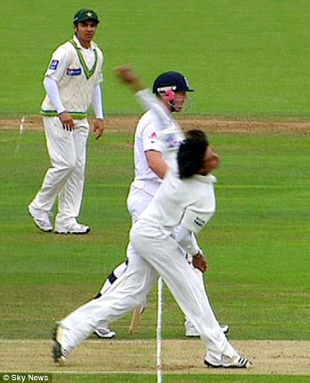
|
|||
English cricket had largely been able to get away with thinking of match-fixing as a foreign concern, but last season this illusion was shattered. In mid-May two Essex players, Mervyn Westfield and Danish Kaneria, were charged with "match irregularities" arising from the county's 40-over game against Durham in September 2009. While charges against Kaneria were dropped, the case against Westfield - which he denies - continues at the time of going to press. Then, last August, the News of the World published a scoop by their reporter Mazher Mahmood who, a decade earlier, had tried to entrap the former Pakistan captain, Salim Malik, by engaging him in an illegal betting scam. This time the current Pakistan captain, Salman Butt, and his two best pace bowlers, Mohammad Aamer and Mohammad Asif, were alleged to have been drawn into a plan by their agent, Mazhar Majeed, to bowl three no-balls at specific moments in the Fourth Test at Lord's against England. The newspaper said it gave the agent £150,000 in cash.
Cricket has not been alone in facing allegations of large-scale corruption. Other professional sports have been embroiled simultaneously - even the International Olympic Committee. After the IOC had been involved in corruption when Salt Lake City successfully bid for the 2002 Winter Olympics, several august figures like Henry Kissinger and Lord Coe helped to reform it. Last year Coe, now head of the London Olympics in 2012, made a pertinent comment: "If any organisation is looking at similarities [to the Olympic scandal], then they have to ensure they absolutely grab control of it [i.e. corruption] as quickly as they can. It can't be death by a thousand cuts."
Cricket suffered innumerable cuts to its reputation as a result of the allegations about the three Pakistanis conspiring to bowl deliberate no-balls at Lord's. Bad blood arose between England's players and Pakistan's in the rest of that Test and the limited-over series which followed; the lack of enjoyment for England's players, when the validity of what they were doing was in doubt, naturally communicated itself to those watching. If there is an exception to the rule about there being no such thing as bad publicity, it is when match-fixing or spot-fixing is involved. I regretfully concluded that never has the end of the professional season been more welcomed than in 2010.
The three Pakistanis were questioned by a three-man independent tribunal, sitting in Qatar, and most of the ICC Code of Conduct charges against them were found proven. At the same time, the Crown Prosecution Service announced that the players, and their agent, would face criminal charges in London - as a result of which Wisden's reporting of this whole affair has been circumscribed to avoid contempt of court. But it can be said that the sanctions handed out to the three players by the tribunal were generally considered, outside Pakistan, to be lenient. I would observe that the punishments probably fitted the charges that were found proved, but this was the ICC's first corruption case and a newspaper was necessary to bring it about. Even though the Anti- Corruption and Security Unit could hardly be seen to entrap in the same way, they could have done more in the decade of their existence than wring their hands, and plead that having insufficient evidence is the fault of players failing to come forward rather than their own.
It would be comfortable to conclude that the episode was just an isolated incident - but wiser to observe how almost all inquiries lift the lid only so far as to find a transgressor or two, then close the lid again. It is, alas, not in officialdom's interest to probe more deeply, because "stakeholders" - especially sponsors and broadcasters - will be scared away. It is up to those of us who follow the game without vested interests to be eternally vigilant, and it would appear that we have not been sufficiently so.
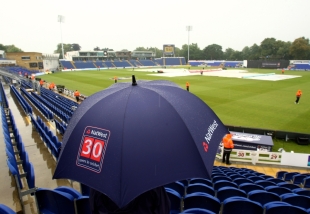
|
|||
The season of 2010 had begun so promisingly. Even though the start was the earliest on record - MCC had to play the Champion County in March in Abu Dhabi - the spring weather allowed two fine rounds of Championship matches. Definite results were reached partly because the heavy roller was not to be used after the start of a Championship game: dents which the ball made in the surface could not be ironed out completely so, whether it was the Dukes brand of ball in the first division or Tiflex in the second, it seamed around and made life unusually difficult for top-order batsmen. Nottinghamshire, who went on to win the title, did not have an opening stand of more than 75 all season.
Into these smoothly operating works came the spanner of 40-over games. The value of them is dubious, at best, as no international cricket of this length has ever been scheduled. The ECB advertised the Clydesdale Bank 40 competition as "what Sunday afternoons were made for", referring to the 1970s when Sunday League games often made for a jolly afternoon, especially at an outground; but now 40-over matches were staged on every day of the week, seemingly at every hour of day and night, and the schedule for the 2010 season was soon reviled as the biggest hotch-potch that English cricket had ever devised. Without doubt it was the most ill-conceived fixture list since 1919, when scarce national resources were a justification for making Championship matches last only two days.
Every county had to play a minimum of 44 matches (92 scheduled match days). This rose to 49 matches if the county reached the finals of the 40-over and 20-over competitions, as Somerset did, and they also played the Pakistanis and Cardiff MCCU: 51 first-team fixtures in all, in five months. Professional football teams play a similar number of games in a season of nine months; their games last only 90 minutes; and even then there are widespread calls for a mid-season winter break.
The expansion in the number of 20-over games from ten to 16 in the qualifying stage outweighed the abolition of the fourth competition of 50 overs. The result was saturation: once the golden goose, Twenty20 became junk food. When it had been a novelty and rarity, Twenty20 had attracted newcomers to the game, like women and youngsters, as it was designed to do. Last season the average attendance for Twenty20 matches dropped, and crowds seemed to be the traditional hard-core county faithful with a few extra walk-ups on the day.
I commend to the ECB the words of Andy Flower, the coach they so sapiently appointed: "Scheduling is tricky, but to have a situation whereby you have a Twenty20 game the day before or the day after a four-day game cannot be right. You cannot allocate the right amount of energy, concentration, planning, skill, preparation, review or recovery. You can't create consistently high standards with those schedules."
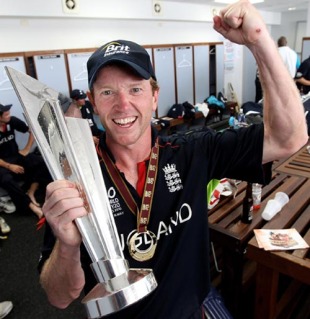
|
|||
While the season was in full flow, or indeed overflowing, England were winning their first global trophy, the World Twenty20. After 17 failed attempts, England finally made it, the last of the eight main Test-playing countries to do so. It was another result that stemmed from the thorough organisation which the Andocracy had introduced into England's cricket, even though Strauss had given up Twenty20. One might add a third left-handed batsman to this honourable list of reformers: Hugh Morris, England's managing director.
What was also notable, however, was the reaction which the winners underwent as soon as they returned to England in mid-May. The batsmen could hardly make a run, and the top four fell by the wayside one by one: Michael Lumb was dropped from the Hampshire team, Craig Kieswetter from England's 50-over side, and Kevin Pietersen from England's 50-over and 20- over sides - while Paul Collingwood, the captain, nominally rested for the Tests against Bangladesh owing to an injured shoulder, laboured until he retired from Test cricket after the Ashes. The system, which Flower and Strauss had adapted so that players could peak and win, is still not designed to allow them to rest after their efforts. Instead, they are forced to keep on playing, and playing.
Systematic rotation was in effect introduced last summer, although no official announcement was made. Collingwood, Pietersen, Swann and Stuart Broad were rested and made unavailable for England selection when in less hectic times they would have played. This did nothing for the game's popularity. It was a pragmatic necessity to get through the overwhelming demands of the schedule - at the expense of the spectator, television viewer and broadcaster. The benefits for the England team were not unqualified either: they lost their unbeaten record against Bangladesh when the tourists won the one-day international at Bristol. Strauss conceded afterwards that if the rested Swann had played, it "would have made a difference". And England would have been better served if they had gone into the 2011 World Cup with an unbeaten record against one of the hosts, Bangladesh, who were in the same qualifying group.
Obviously there have always been cases when a pace bowler has needed a winter off. As a rule, though, a country should be represented by the best 11 players in the best possible condition. Anything less is a con trick.
More beauty, less speed
The signal given by a captain after the toss at any level of the sport, to tell his players that they are batting first, has become an anachronism. A forward defensive push with the left hand in no way conveys the action of batting as it has become. While it would be safe to generalise that before the 1970s the average good-length ball, at whatever level, was not scored off, it will probably be hit for runs now. Scoring-rates have rocketed: Don Bradman sped along at 61 runs per 100 balls in Tests. In some 20-over tournaments, batsmen - Kieron Pollard, for example, in the Champions League - have scored at more than 200. Teams too have been recalibrated to score at ten runs per over for a whole innings: Surrey clouted 386 off 38 overs against Glamorgan at The Oval last season. In the IPL, teams have scored at 12 an over. And last November in a Hong Kong final, admittedly of a six-a-side tournament, Australia needed 46 off the last eight-ball over - and won with a ball to spare.
This is, on the surface, exciting stuff. But we have reached the stage of too much of a good thing. The scoring of a boundary should be a moment for spectators to applaud rather than barely notice; it is dramatic when a period of scorelessness is broken by a stroke, especially a well-made one. Now, a ball disappearing out of a ground is routine. Limited-overs batting is increasingly like baseball-hitting and leg-sided, so the off-side strokes that are the game's beauty - relying more on technique and timing than force - are being rapidly eroded.
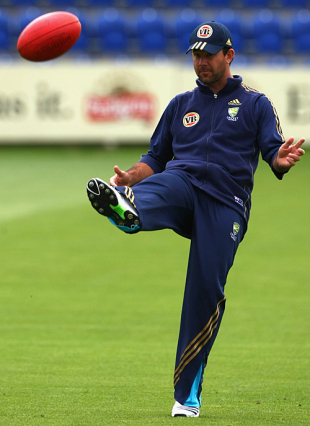
|
|||
Aussie Rules rules
The game has other ills, from bottom to top. Groundsmen are not recognised and rewarded sufficiently: everything stems from the strip of 22 yards of turf they produce, and most international pitches are plain dull. In the West Indies, specifically, if their governments want to revive cricket as they profess, they would do well to employ groundsmen to care for club grounds and their pitches.
At the highest level of administration, politicians are taking over, which cannot be healthy. There may be something to be said for a former politician, such as John Howard, becoming an administrator, as he tried to do in the election for the ICC presidency; but precious little for active politicians. They have too little time for the game and too many vested interests.
While in Australia I was impressed, and a little disheartened, by the way that Australian Rules football is taking over from cricket as the national team sport. The game was invented by the Melbourne Cricket Club as a way to keep its cricketers fit in winter, using the acreage of the MCG, but by the 1980s it was moribund and mostly confined to Melbourne. This crisis forced a change in the constitution of its governing body: instead of the clubs electing a lot of diehard committeemen from their own number, as in cricket, a much smaller board of great-and-good was appointed. They had specifically required skills, including a former leader of Australia's trade unions to deal with strained player relations.
Now the Victorian Football League is the Australian Football League, thriving nationwide and attracting young elite athletes with its average salary of $A230,000 (about £150,000), twice that of the state cricketer, and with 800 jobs available - eight times as many as in professional cricket. The offspring has taken over the parent, because the constitution of Cricket Australia is the same as in the 19th century. In the same way the constitutions of most Test-playing countries, as well as the ICC's, are unfit for modern purpose.
Play!
But nobody - no politician, administrator or cricketer, corrupt or not - can destroy the essential pleasure of bat and ball. You may choose to believe the pronouncement of the ICC's chief executive Haroon Lorgat, after three of Pakistan's finest cricketers were banned, that the international game is clean; or the statement by Pakistan's wicketkeeper Zulqarnain Haider, later retracted, that this incident was only "the tip of the iceberg". If you read our article on Asia's illicit gambling dens following these Notes, you will probably incline more to Haider's initial view. But the game's vitality will be reaffirmed by a look at our Cricket Round The World section. From Afghanistan - especially Afghanistan - to Ukraine to Timbuktu, cricket is spreading ever more widely.
And, as it spreads, cricket shows itself to be an excellent vehicle for racial integration. True, in the past and still in the present, cricket teams have been composed on racial and religious lines: one need only think of the Bombay Pentangular Tournament, which Gandhi came to preach against, or apartheid South Africa. But cricket teams should be assembled without racial or religious distinctions, and it scores every time over other team sports like rugby and football by being non-contact. There is so much less risk of friction, misunderstanding or violence. You can be as physical as you like, bowling fast or standing at slip, but physical contact is never allowed.
More than any other first-class county I know, Nottinghamshire has been active in promoting cricket in deprived areas; and the statistics seem unequivocal in showing how crime has been reduced in the poorer areas of Nottingham where cricket has been promoted. In an ever more polarised world, cricket becomes more - not less - relevant.
Even if you are in your fifth decade of playing cricket, as I am, the pleasures at the start of a new season continue - at least until the first misfield. Taking the kit out of the cupboard, to find socks from last autumn and boots lacking studs; removing the rope from around the square, allowing access to the sanctum of the 22 yards of grass; the first outdoor net and the first ball that comes blessedly off the bat's middle; then the day itself of the opening game, and the most reassuring of sounds, that of the mower, for it means rain has relented enough to allow cricket; leaves on the trees as the earth springs into life again; then the palpitating moment when, after seven dark months, the umpire calls "Play" and everything is right with the world - until that first misfield or mistake. Very much like hope, the joy of cricket springs eternal.
Buy the 2011 Wisden Cricketers' Almanack

